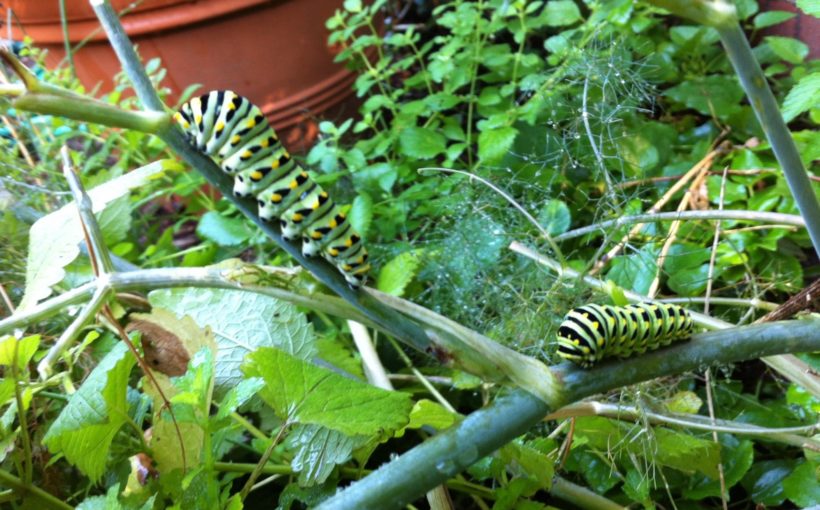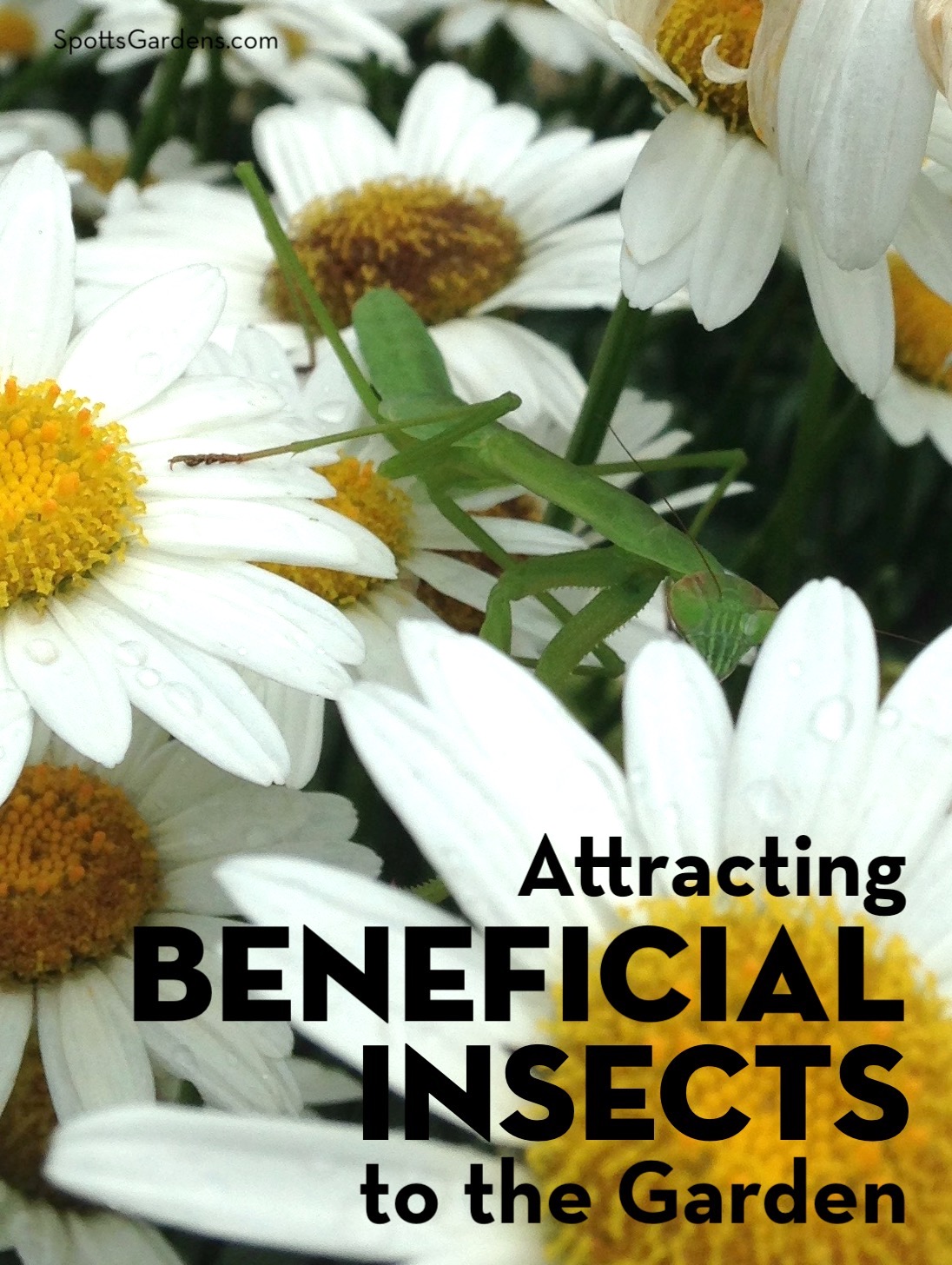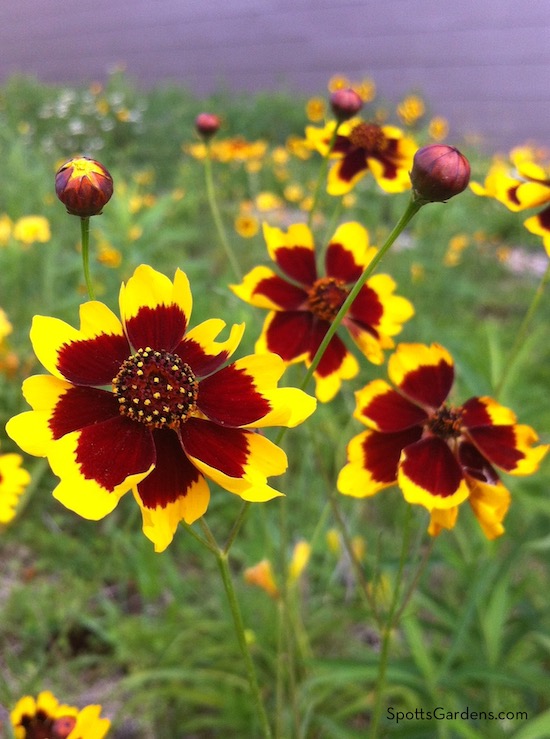A robust population of insects is important to a healthy garden. While we tend to focus on those intruders like Japanese beetles and squash bugs that damage our plants, many more insects are assets! These beneficial insects provide services like pollination and control of pest insects.
What Are Beneficial Insects?
For our purposes, it’s easiest to divide beneficial insects into three groups:
- Predators: insects that prey on other insects. Predators common in Indiana gardens include lacewings, soldier bugs, praying mantis, and hoverflies (syrphid flies). Native lady bugs are also beneficial predators. (Asian lady beetles are invasive.) Both the adult and larval stages of predators may eat other insects, or it may be only the larval stage that dines on insects.
- Parasitoids: wasps and flies whose eggs hatch within an insect host. The larvae then eat the host insect alive from the inside out. Some Indiana parasitoids include the tachnid flies and the enormous group of wasp parasitoids. The larvae dine on the host insect, but the adult stage of many of these parasitoids instead live on nectar and pollen.
- Pollinators: insects that transport pollen from plant to plant. Pollinators are vital to fertilizing plants and ensuring that they can reproduce. While European honeybees are the the best known, our native pollinators are just as important! We’ve written more about attracting pollinators in Plant For Pollinators.
Encouraging Beneficial Insects
Generally, if a large enough population of pest insects arrives in the garden, a population of predators or parasitoids will follow them. Do not treat the pest population with pesticides. Treating with pesticides will likely destroy far more than the target population, including pollinators and other beneficial insects.
Instead, use mechanical controls (like handpicking Japanese beetles off the plants or shooting aphids off with a hard stream of water) while you wait for the beneficial insects to show up. You might be able to hurry their arrival by ordering beneficial insects online to release in your garden.
In some cases, both the larval and adult stages of the beneficial insect dine on other insects. In other cases, especially the parasitoids, the larvae are predators, but the adults live on nectar and pollen. Make sure you have plants in the garden that can serve as food and habitat.
Planting for Beneficial Insects
The more diverse your garden plantings, the wider a range of beneficial insects you can attract. InsectPlants that have tiny blooms held flat are particularly attractive to smaller beneficial insects. The carrot, daisy, scabiosa, and cabbage families all offer flowers that provide pollen and nectar.
These five plants are particularly useful for attracting beneficial insects (pollinators love them too)!
Tickseed (Coreopsis spp.)
One of our favorite perennials for the garden, tickseed (Coreopsis spp.) sports small, daisy-like blooms in full to part sun. While the thread-leaf varieties (C. verticillata) are attractive, we find those with thick leaves (C. grandifloraand hybrids) to be tougher in Indiana summers. We particularly like the new ‘UpTick’ series for its compact size and long bloom time. Tickseed attracts hoverflies, lacewings, and parasitic wasps.
Dill (Anthem graveolens)
Amazingly easy to grow in full to part sun, dill (Anthem graveolens) produces leaves for flavoring and seeds for pickling. We start it by casting a handful of seeds in a sunny or lightly shaded area. Because it self-seeds so readily, you can count on this annual coming back. The flat flowers are a magnet for lady beetles, lacewings, and parasitic wasps.
Parsley (Petroselinum crispum)
Not only does parsley (Petroselinum crispum) encourage hoverflies and parasitic wasps, but it’s also a caterpillar food for swallowtail butterflies. We plant it in full to part sun on the edge of the vegetable garden or under fruit trees. Designate some to harvest regularly for cooking, but let other plants flower for the insects.
Sunflower (Helianthus annus)
Bright and brilliant in the vegetable garden or flower border, annual sunflower (Helianthus annus) attracts hoverflies and lady bugs. To use sunflowers as insectary plants, be sure to choose a variety that has pollen, not one of the pollen-free varieties bred for cutting. Sunflowers with a large disc are better at attracting insects than ones with large rays (which means you want a sunflower where the center section is really big).
Yarrow (Achillea millefolium)
The flat, wide blooms of perennial yarrow (Achillea millefolium) welcome hoverflies and parasitic wasps. They’re tough as nails; they love full sun and high heat and bloom over a long period. Choose from flowers in shades of white, yellow, gold, red, or even pastels.


